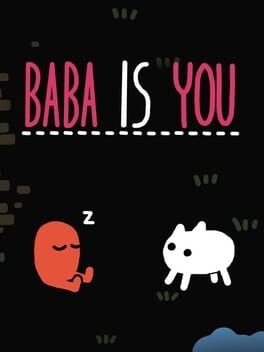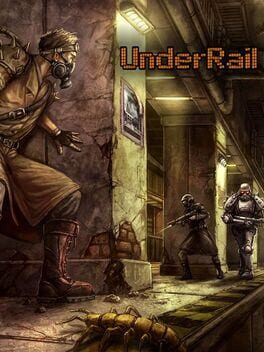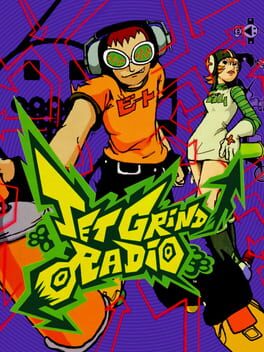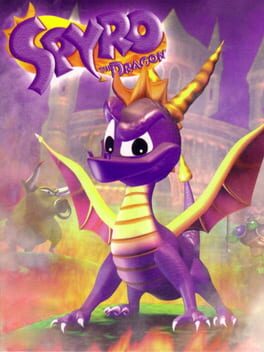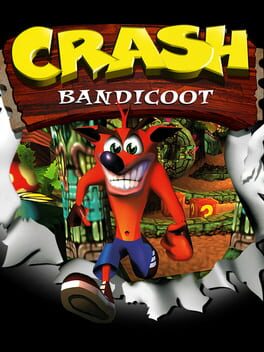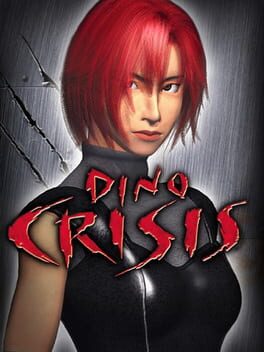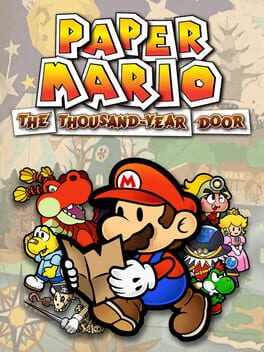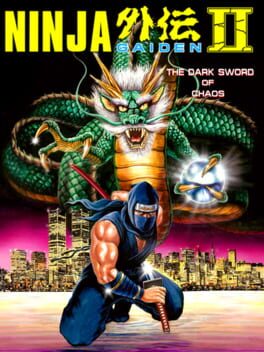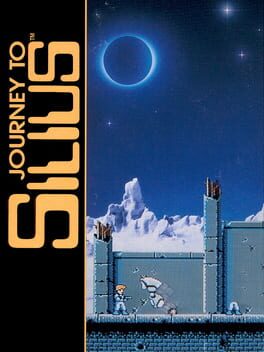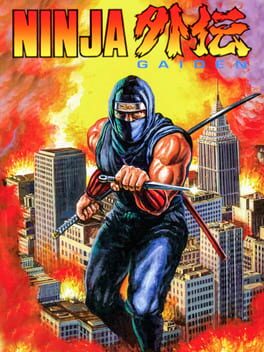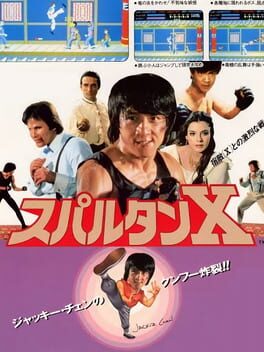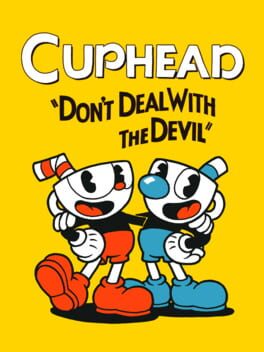2019
Describing this game as a simple block pushing puzzle game would be doing it a disservice, even if it’s an accurate thing to say. While you are pushing blocks, and it is a puzzle game, the focus is less on the geometry of blocks and more about what they can represent. To explain what I mean, the title of the game is actually pretty descriptive of what you see in game. The blocks are tiles with words on them, corresponding to the ones in the title. You have subject tiles like “Baba”, verb tiles like “is”, and objects tiles like “you”. An example puzzle would be a wall being in the way between you and the win flag. If nearby tiles said “Wall is stop”, you could move the “stop” tile away from the other two, and walk through the wall which can no longer stop you. While that description makes it sound fairly simple, the amount of possibilities this system allows for a huge problem space. Luckily, the difficulty is presented in a very friendly way, with each completed level opening up multiple options, and getting to the credits only requires about 25% completion. Not only does this help people having trouble with the game, it can also give you an easy out if it still feels too much like a standard block pushing puzzle. While I was one of those people, I have to admit that the cute concept and low price makes it at least worth a look.
2013
Researching games before you buy them is critical if you want to be a smart consumer. On the other hand, it’s also important to know when to stop. It's good to get an honest assessment of a game’s strengths, but picking apart the gameplay mechanics and planning strategy is usually going too far. The only reason I’m saying “usually” instead of “always” is because of a game like UnderRail. This is an RPG that’s so demanding that if you don’t do build research and planning before you begin, you’ll almost definitely hit a brick wall and be unable to finish the game. Even with a Google doc that laid out exactly what I needed to do, this game was still pretty difficult, so I can’t imagine what it would be like going in blind. Actually, it’s fairly easy to imagine, given the hundreds and hundreds of complaints I saw during my research from people who made builds that weren’t good enough and had to quit before the end. The isometric, post apocalyptic RPG stylings may have made people think it would be simple like Fallout 2, but this game’s structure is very different. Most of the time your progress entirely relies on combat effectiveness rather than your capacity for clever approaches, and you’re not going to be able to talk your way through things with any reliability. If the idea of forty hours of isometric turn-based combat after a couple hours of build research doesn't immediately scare you off, then you need to seriously consider playing this game. The upside to having a game this complex is that it has a crazy amount of options to play around with once you know what you're doing. The reason why the research is required is so you can have the right skills to surmount a few difficulty walls, not because the whole thing is so punishing that it's impossible to play if you're not optimized. After getting through the first playthrough, you know enough to just make up fun gimmick builds and take the systems to their limit. For anyone that fits within the overlap between RPG fans, difficult game fans, and optimization fans, this is the game for you, but if you don’t fit into at least two of those categories then it’s best to give it a pass.
2000
If there's one truth about pop culture trends, it's that they don't age well. It takes something incredibly special to actually last, and I was surprised to see that Jet Set Radio somehow pulled it off. Even though it's steeped in the extreme sports and bright colors of the early 2000’s, it remains timeless by weaving their basic appeal into a holistic game design. The developers knew that a sense of speed and flow was something that could appeal to anyone, so they designed the maps to wordlessly facilitate such an experience, with networks of corridors smoothly feeding into each other. If players can recognize how different paths link, momentum can be transferred gracefully as they navigate to each objective. With the goal being to recognize optimal paths, having small maps that the Dreamcast could handle didn’t feel like a limitation at all, and instead a smart choice to facilitate a smooth skating experience. The bright cel-shaded art style also let the developers squeeze a lot of power out of the hardware, so going fast and spinning the camera around wouldn’t be a problem at all. With it being so well-engineered, the only gripe I can think of is how the game can feel pretty bad before you get to the starting point of that design: moving at high speed. Getting moving from a dead stop takes a long time, and the imprecise nature of moving on wheels means the smallest momentum-killing mistakes feel like a slap in the face. For the first hour of gameplay, you may be wondering if I just made up everything I’ve said about speed and momentum, but after some practice, the game’s qualities will click into place.
Also, this game was a bitch to get working on PC with a controller. I’ll save you the trouble and just tell you to download x360ce and map your controller with it, then you’re good to go.
Also, this game was a bitch to get working on PC with a controller. I’ll save you the trouble and just tell you to download x360ce and map your controller with it, then you’re good to go.
2012
Journey is one of the first games labeled as a walking simulator since it came out about a year before Gone Home, where the term exploded in popularity. It was one of the pioneers of games entirely about a visual experience rather than any form of traditional gameplay challenges. This makes it difficult to critique, because the only criteria the game seeks to be judged by is how visually beautiful you find it to be. Surely enough, I found it to be visually spectacular, but those scenes went in one ear and out the other. Not having to think much while playing can be immersive, but that can come at the cost of not imprinting itself deeply in memory. It’s well executed, but shallow. That’s a perfectly acceptable design priority, but it’s hard to generate enthusiasm about.
1998
The Playstation needed an answer to Mario, and it got one with Crash Bandicoot and Spyro the Dragon, but as a unit rather than individually. Crash covered the platforming challenges, while Spyro handled the fun open spaces and colorful atmosphere. While completely devoid of challenge, it’s a beautiful game with a lot of quirkiness that gives it a Mario-like charm. However, if you're playing this game for the first time, it's going to be hard to get over just how much this game was geared towards kids. Challenge isn’t even something I highly value in games, but with just how little brain activity this game requires until the last couple stages, it can be painfully dull. If you can succeed in turning your brain off there will be plenty to appreciate, but you're not going to have very much fun in the gameplay itself. Just like Crash, this game belongs on the list of historical games you should check out, but more because of its status as a founder rather than an exemplar of its genre.
1996
With Crash Bandicoot’s style of 3D platforming being set in long hallways, it can be pretty easily compared to 2D platformers, with the best example being Donkey Kong Country. Both were visually groundbreaking games with immersive environments and brutal difficulty, taking players across a variety of zones filled with their own unique challenges. So, just like in my Donkey Kong Country review, I have to point out that the challenge and immersion didn’t mix well. Some levels are absolutely enchanting with their details and visual polish, but as visual styles get reused for increasingly difficult stages, the magic wears off and you're left repeatedly running down a corridor and getting smashed. Being the initial attempt at the concept means it deserves some level of forgiveness, but after the good first impression wears off, you'll definitely wish you were playing one of the later games in the series. It certainly belongs on the list of historically important games to play, but I wouldn't predict that people would fall in love with it today as they did back then.
1999
The goal for Dino Crisis in development was to make a more fast-paced style of survival horror, which the developers referred to as panic horror. Instead of scrounging bullets to take down shambling zombies, you have a good amount of options to take down dinosaurs who are much faster and stronger than you. Preparation is the key to panic horror; you need to learn how to assemble your inventory and develop backup plans for the inevitable surprise attacks. It’s a fun and fresh take on the genre, but it does feel limited by the Playstation’s hardware and the Resident Evil development heritage. The mental picture of dinosaurs chasing you as you frantically activate laser grids is one thing, but the reality of stiffly navigating hallways as the dinosaurs get stuck on corners is another. If Dino Crisis lived up to the strength of its premise, I think I would like it even more than Resident Evil, but it never got the refinement its sister series enjoyed in sequels and remakes. I can still give this game a recommendation, but it pains me how much more I feel this series could have been.
It’s common for a turn-based RPG to be recommended with the qualification that it only gets good tens of hours in. One would think this wouldn’t apply to something as straightforward as a Mario RPG, but I bounced off The Thousand Year Door on my first playthrough for this reason exactly. The first two chapters are about as standard as an RPG can be, fighting a dragon in a castle and following it up with exploring a dungeon inside a big tree. You won't be blamed for thinking it's the world’s most generic RPG with Mario on top, but then the third chapter cranks the personality up to eleven. From that point forward, the charm is so strong that it actually got me interested in Mario games in general. It does so many fun things with the Mario universe that it reminded me why the series is so big in the first place. There’s a lot of fun to be had in a lighthearted game with a small but polished set of mechanics, and it’s a smart way to have mass appeal that’s also free from compromise. Some games drop the ball when trying to court audiences with tons of features, but Mario is appealing specifically because it lacks extraneous elements. The Thousand Year Door doesn’t even have a character attributes system, each party member just has a defense number, a health value, and a special move. That’s all it needed to make everyone feel unique, and no confusing elements were required. Anyone can understand this game and have a good time with it, at least as long as you don’t need a meaty challenge to hold your interest.
1986
Breath of the Wild’s attempt to bring Zelda back to its roots revitalized the discourse surrounding the original entry. Since Breath of the Wild was advertised as a return to the classic ideals, the positive reception has spilled over to the first Zelda, and their shared tutorial-free open design has received a ton of praise. The only downside for modern audiences who want to check out the original is that it’s known for being extremely confusing, and a game that you can't complete without a guide. I decided to put these ideas to the test, and I was surprised at how wrong they were. The game is certainly as open as people have been saying, but the caveat is that going outside recommended areas will lead to getting your ass kicked incredibly quickly. The idea that you’re left with no direction in a gigantic open world really isn’t true, it’s just that the direction is given implicitly through difficulty and item limitations rather than explicit dialog. With this perspective, the genius of Zelda’s world design became a lot easier to appreciate. The way you’re always close to the next bit of progression while still being allowed to figure things out on your own gives the advantage of a linear difficulty pacing while still feeling completely open. The truth about this game lies in between the new and old conceptions about it, in how it forms the perfect illusion of openness and mystery even when your journey has actually been planned from the start.
Technologically speaking, it’s hard to argue that Ninja Gaiden 2 is anything but superior to the first game. It looks better and controls much more smoothly, with new level gimmicks and a more fleshed out story to keep the experience fresh. The tradeoff was that with all the fancy new additions, the tight focus on action with momentum was lost. Falling platforms, wind effects, or levels lit only by flashes of lightning are neat to see on the NES, but gimmicks like these should serve to enhance the core gameplay rather than supplant it. Unlike Ninja Gaiden, caution is a very viable strategy, with new power-ups that are strong enough to let you brute force most challenges as long as you can avoid falling into a pit. Again, these power ups are cool and fun to use, but once the novelty wears off, it doesn't give you the same level as the first game. It may have its strengths, but there’s a reason why this isn't known as the Mario 3 of its franchise.
1990
There is a hardware bug in the NES that prevented developers from using differential pulse-code modulation for their music. If a sample byte is fetched from memory at the same time the game is reading from the controller, a conflict occurs that corrupts the controller data. This meant software workarounds were required, such as Mario 3 repeatedly repolling the controller until two consecutive inputs matched. Sunsoft also went this extra mile, and it let them make some of the best tracks on the console. That music is why I played this game, and it's pretty much the game's only redeeming quality. It's a very basic side scrolling shooter without anything unique other than the fantastic soundtrack. It's particularly frustrating because it's from that era of games with limited continues, meaning that you have nine lives to beat five stages, some with multiple bosses. It's an exercise in frustration, and you're better off experiencing this game by youtubing the soundtrack rather than playing it yourself.
1988
Ninja Gaiden is one of the most influential platformers on the NES, but the first thing someone should understand before playing it is that it doesn't actually abide by the sensibilities of a platformer. Games like that are typically about balancing speed and caution, with speed allowing you to clear longer gaps and avoid more enemies, and caution letting you anticipate the danger of hazards past your vision range. When playing Mario games, most people just hold the run button down by default, but this balance is the reason why Mario doesn't always move at maximum speed. It demarcates the two priorities you can have when traversing a level, letting you deliberately switch between the modes of reckless efficiency and safety. Ninja Gaiden’s buttons on the other hand are jump and attack, hinting that the two gameplay states aren't between caution in speed, but of speed and aggression. There is absolutely no room for caution here, taking any steps backwards will have enemies immediately respawn and kill you in seconds. How soon enemies respawn when you start backpedaling can make the game feel extremely unfair, but the level design begins to shine once you discover the flow among the hazards. When you need to make it to the boss and are effortlessly slicing through every enemy without pause, it gives you the unique satisfaction only great action games can deliver. I’ll add the parenthetical that there are some parts where I think the difficulty spikes into unfair territory, but for the most part I would say that satisfaction is worth the effort.
1984
For anyone unfamiliar with this game, which I imagine would be most people, this is a very early NES beat-em-up that has five levels which can each be beaten in about a minute. So, the game itself isn't very interesting, but I found it fascinating to consider what gaming was like when Kung Fu was released. Video game titles were things like “Tennis” or “Baseball” and had the optics of a toy more than our current expectation for interactive movies. You just picked it up and played with it until you got bored or won and moved on to something else. Considering how much is expected of even cheap games nowadays, having to pay full price for something like this would incite a riot. At the most simple level though, it offers toy-like fun, and that should always be worth something. It’s sad that the concept of simple toy games seems to have lost its last shot in the spotlight when the mobile market got dominated by microtransaction riddled garbage.
2013
Mediocre games are usually hard to recommend, but sometimes an unfocused experience can be the most broadly appealing. Killer is Dead doesn’t have particularly deep mechanics or an emotionally engaging story, but Suda 51’s excessive design sensibilities make it a joy to play. Everything is so cranked up past the point of sanity that you want to keep playing just to see where he’s going with all this. He wanted a protagonist with a cool name, so he went with something so cool that it wrapped around into uncoolness a few times and landed on “Mondo Zappa”. Cybernetics are cool, so Mondo has a cybernetic arm that’s about the size of his torso. Tarantino-esque violence can look pretty cool, so the gameplay is about using a giant katana with a hilarious amount of blood spray. It’s a beautifully campy presentation, with the unifying idea being simple, visceral fun. It would be a great pickup for people looking for the video game equivalent of a comic book, or are interested in an unintimidating entry point to the action genre. It’s also incredibly cheap during Steam sales, which makes the half-baked elements much more palatable. Four bucks and a sense of humor are low requirements for seven hours of fun.
2017
This game is easy to review due to its complete honesty. Its hook is the 1930’s art style, with the gameplay being very basic platform shooting that everyone can understand. If you’re interested enough in the art style to play a middling shoot-em-up, then this game is for you. If you're expecting satisfying gameplay and fair boss fights, this isn’t the place. The game relies heavily on trial and error, with bosses usually having four sets of attack patterns to vastly overpower your ability to survive two hits. Furi was another game that focused on difficult boss battles, but it struck a balance with its difficulty by rewarding players with two lives after every phase, capping at three. This ensured players have at least two chances to learn the patterns before getting kicked back to the start, unlike in Cuphead where you can get immediately destroyed by a new attack you don’t understand. Also unlike Furi, the attack signifiers can be incredibly vague, so chances are good that players will get hit by each attack at least once without any concrete way to have predicted it. The visual design and soundtrack are just enough to make this game worth purchasing, but I wouldn’t blame anyone who gets frustrated and disenchanted with it before the end.
